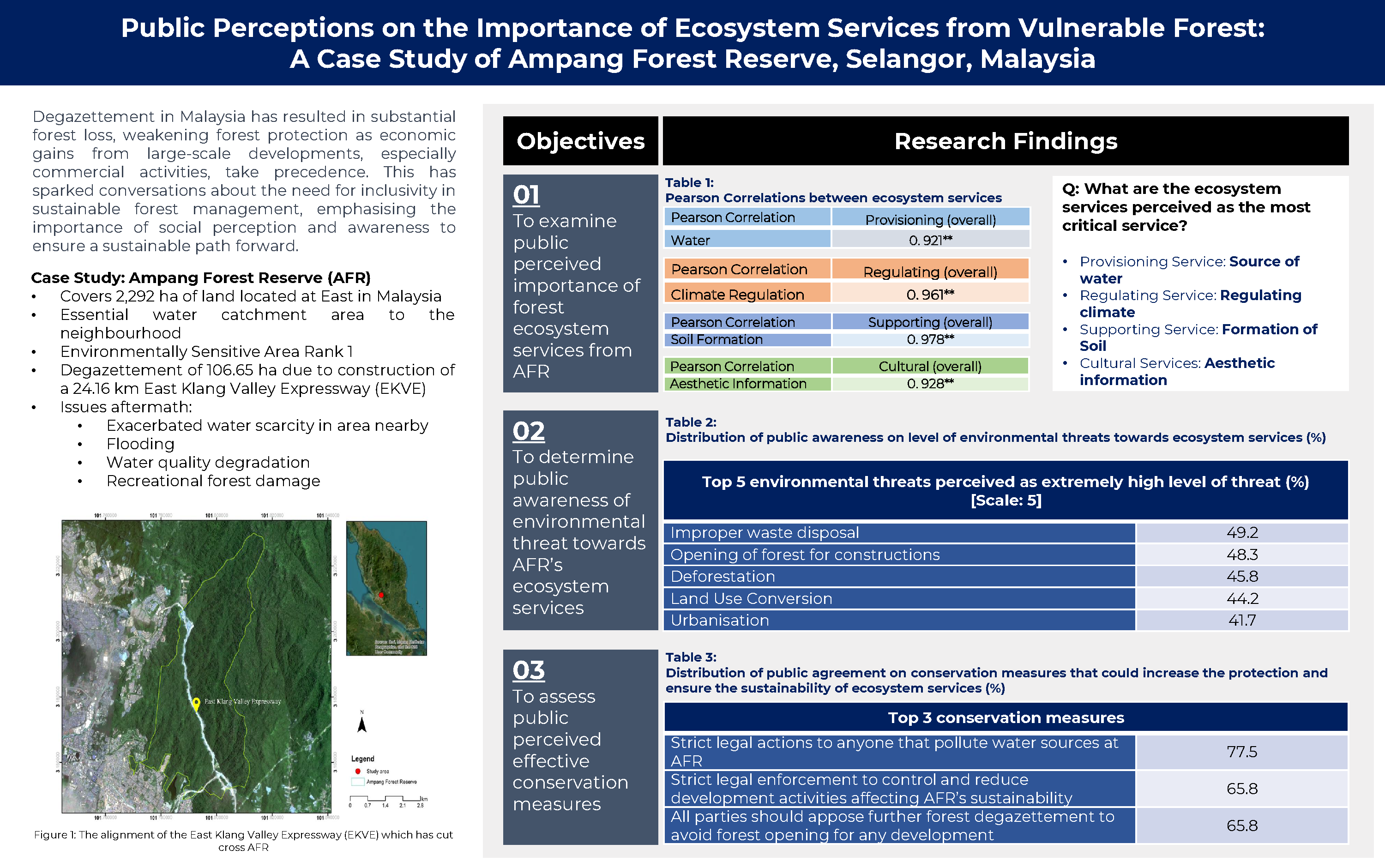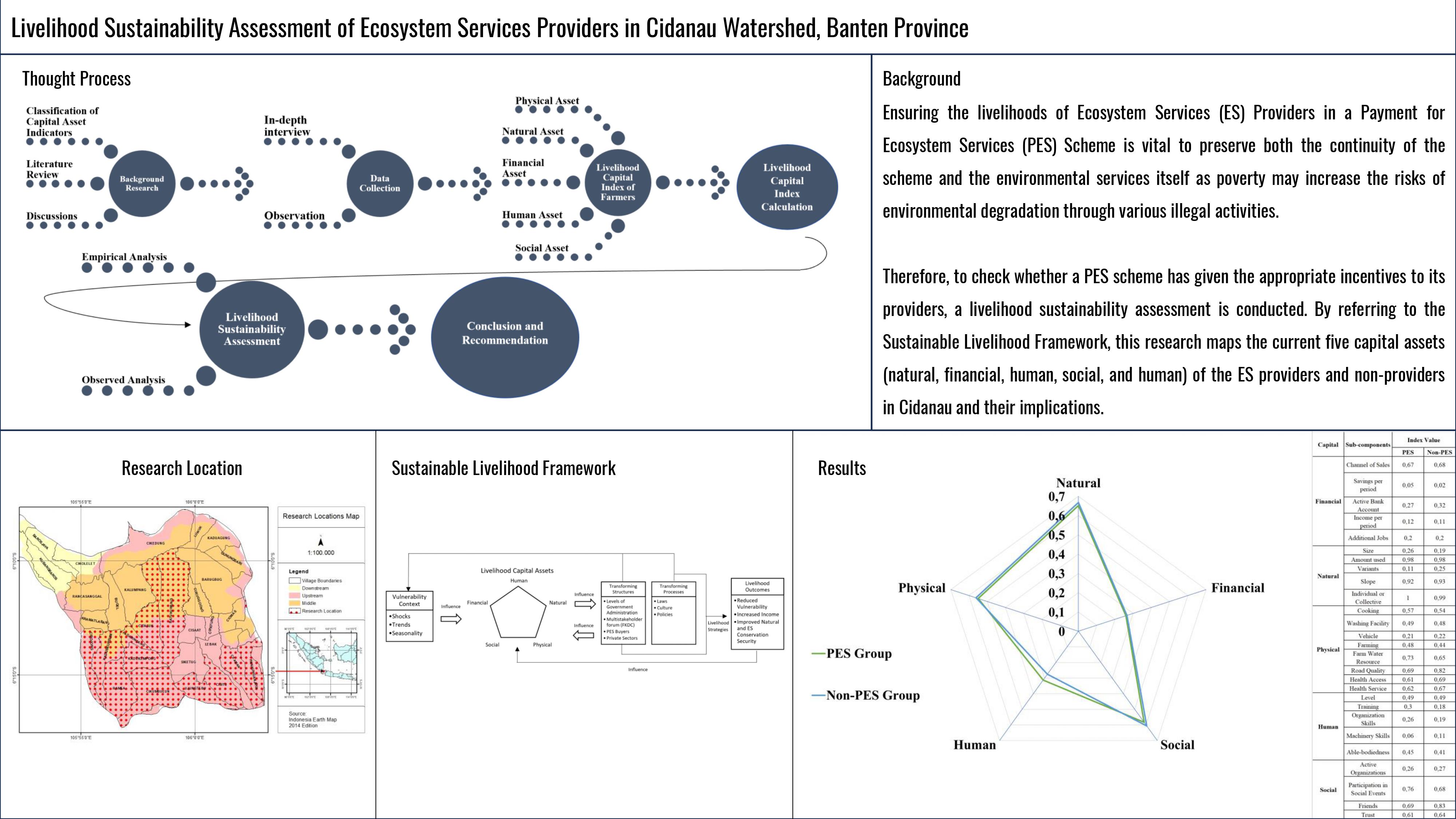The Role of Natural Capital in Surviving Periods of Crisis: A Case Study of the Nglanggeran Village Community
Abstract
The sustainability of tourism-based livelihoods can be threatened when a crisis occurs. Thus, people’s resilience during crisis is a significant factor for people to maintain livelihoods as it is a contributing mechanism for people to escape from crisis. This research examines how the Nglanggeran community sustains their livelihoods by utilizing their natural resources as a strategy to survive Covid-19 pandemic between 2020 to 2021. This study uses an ethnographic approach. The data collection process was carried out through participant observation and in-depth interviews with 14 former migrant workers and who now live in Nglanggeran village. The focus of the analysis in this study is the strategy of the Nglanggeran community in maintaining their livelihoods by utilizing their land. The analysis process uses thematic analysis. People who own paddy fields are more likely to survive than those who plant trees for timber on their land. What the Nglanggeran community does is important in maintaining their resilience and as a survival strategy for the local community. Tourism activities do not have to displace traditional livelihood activities on local people's land, rather land use can be optimized to support sustainable livelihoods. While they can optimalise land use, this does not increase their quality of life. They have survived but their livelihoods remain vulnerable.
References
Alemayehu, A., & Bewket, W. (2017). Smallholder farmers’ coping and adaptation strategies to climate change and variability in the central highlands of Ethiopia. Local Environment, 22(7), 825–839. https://doi.org/10.1080/13549839.2017.1290058
Ali, A. (2018). Impact of climate-change risk-coping strategies on livestock productivity and household welfare: Empirical evidence from Pakistan. Heliyon, 4(10), e00797. https://doi.org/10.1016/j.heliyon.2018.e00797
Amerta, I. M. S., Sara, I. M., & Bagiada, K. (2018). Sustainable tourism development. International Research Journal of Management, IT and Social Sciences, 5(2), 248–254.
Bakar, N. A., & Rosbi, S. (2020). Effect of coronavirus disease (Covid-19) to tourism industry. International Journal of Advanced Engineering Research and Science (IJAERS), 7(4), 189–193. https://doi.org/10.22161/ijaers.74.23
Baker, K. (2009). Terorism and tourism: The vulnerability of beach vendor’s livelihoods in Bali. Journal of Sustainable Tourism, 15(3), 249–266. https://doi.org/10.2167/jost643.0
Braun, V., & Clarke, V. (2006). Using thematic analysis in psychology. Qualitative Research in Psychology, 3(2), 77–101. https://doi.org/10.1191/1478088706qp063oa
Chambers, R. (2006). Vulnerability, coping and policy. Asian Economic Journal, 37(4), 33–40. https://doi.org/10.1111/j.1759-5436.2006.tb00284.x
Chambers, R., & Conway, G. (1992). Sustainable rural livelihoods: Practical concepts for the 21st century. Brighton: Institute of Development Studies.
Creswell, J. W., & Miller, D. L. (2000). Determining validity in qualitative inquiry. Theory into Pratice, 39(3), 124–130. https://doi.org/10.1207/s15430421tip3903_2
Dahles, H., & Prabawa, T. S. (2013). Entrepreneurship in the informal sector: The case of the pedicab drivers of Yogyakarta, Indonesia. Journal of Small Business and Entrepreneurship, 26(3), 241–259. https://doi.org/10.1080/08276331.2013.803672
Dekker, M., van Beek, W. E. A., Damen, J. C. M., & Foeken, D. W. J. (2017). From macro to micro: How smallholder farmers in Zimbabwe are coping with dollarization. In W. E. A. van Beek, J. C. M. Damen, & D. W. J. Foeken (Eds.), ASCL occasional oublications (pp. 63–74). African Studies Centre Leiden (ASCL).
[DFID] Departement for International Development. (1999). Sustainable livelihoods guidance sheets (guideline sheet). Retrieved from. http://www.dfid.gov.uk/
Ellis, F. (2000). Rural livelihoods and diversity in developing countries. Oxford: Oxford University Press.
Fafchamps, M. (2004). Market institutions in Sub-Saharan Africa. Cambridge: MIT Press.
Firdaus, H. (2015, 22 November). Sugeng Handoko, mengubah desa dengan wisata alam. Kompas. https://travel.kompas.com/read/2015/11/22/182045927/Sugeng.Handoko.Mengubah.Desa.dengan.Wisata.Alam?page=all
Hardy, A. L., & Beeton, R. J. S. (2001). Sustainable tourism or maintainable tourism: Managing resources for more than average outcomes. Journal of Sustainable Tourism, 9(3), 168–192. https://doi.org/10.1080/09669580108667397
Hjemdal, O., Friborg, O., Stiles, T. C., Martinussen, M., & Rosenvinge, J. H. (2006). A new scale for adolescent resilience: Grasping the central protective resources behind healthy development. Measurement and Evaluation in Counseling and Development, 39(2), 84–96. https://doi.org/10.1080/07481756.2006.11909791
Kasperson, R. E., Dow, K., Archer, E. R. M., Cáceres, D., Downing, T. E., Elmqvist, T., ... & Ziervogel, G. (2005). Vulnerable peoples and places. In R. Hassan, R. Scholes, & N. Ash (Eds.), Ecosystems and human wellbeing: Current state and trends (pp. 143–164). Island Press.
Kebebew, Z., & Urgessa, K. (2011). Agroforestry perspective in land use pattern and farmers coping strategy: Experience from southwestern Ethiopia. World Journal of Agricultural Sciences, 7(1), 73–77.
Kour, P., Jasrotia, A., & Gupta, S. (2020). Covid-19: A pandemic to tourism guest-host relationship in India. International Journal of Tourism Cities, 7(3), 725–740. https://doi.org/10.1108/IJTC-06-2020-0131
Lasso, A., & Dahles, H. (2018). Are tourism livelihoods sustainable ? Tourism development and economic transformation on Komodo Island, Indonesia. Asia Pacific Journal of Tourism Research, 23(5). https://doi.org/10.1080/10941665.2018.1467939
Lasso, A., & Dahles, H. (2020). Fishermen into tour boat operators: Tourism development in Labuan Bajo, Indonesia. In C. Dolezal, A. Trupp., & H. T. Bui (Eds.), Tourism and development in Southeast Asia (pp. 133–146). Routledge.
Li, Y. J., Yu, H., Chen, T., Hu, J., & Cui, H. Y. (2016). Livelihood changes and evolution of upland ethnic communities driven by tourism: A case study in Guizhou Province, southwest China. Journal of Mountain Science, 13(7), 1313–1332. https://doi.org/10.1007/s11629-015-3631-6
Marshall, M. N. (1996). The key informant techniques. Family Practice, 13(1), 9297. https://doi.org/10.1093/fampra/13.1.92
Mason, P. (2008). Tourism impacts, planning and management (2nd ed.). New York: Elsevier.
Mbaiwa, J. E., & Stronza, A. L. (2010). The effects of tourism development on rural livelihoods in the Okavango Delta, Botswana. Journal of Sustainable Tourism, 18(5), 635–656. https://doi.org/10.1080/09669581003653500
Moser, C. O. (Ed.). (1996). Confronting crisis: A summary of household responses to poverty and vulnerability in four, poor urban communities. The World Bank. https://doi.org/10.1596/0-8213-3561-8
Neto, F. (2003). A new approach to sustainable tourism development: Moving beyond environmental protection. Natural Resources Forum, 27(3), 212–222). https://doi.org/10.1111/1477-8947.00056
Niehof, A. (2004). The significance of diversification for rural livelihood systems. Food Policy, 29(4), 321–338. https://doi.org/10.1016/j.foodpol.2004.07.009
Nost, E. (2013). The power of place: Tourism development in Costa Rica. Tourism Geographies: An International Journal of Tourism Space, Place and Environment, 15(1), 88–106. https://doi.org/10.1080/14616688.2012.699090
Prasekti, Y. H. (2017). Peran wanita tani dalam menunjang perekonomian rumah tangga keluarga petani. Jurnal AGRIBIS, 13(15), 1–16.
Rátz, T. (2000). Residents' perceptions of the socio-cultural impacts of tourism at Lake Balaton, Hungary. In G. Richards & D. Hall (Eds.), Tourism and sustainable community development (pp. 36–47). Routledge.
Rutter, M. (2006). Implications of resilience concepts for scientific understanding. ANNALS The New York Academy of Sciences, 1094(1), 1–12. https://doi.org/10.1196/annals.1376.002
Scoones, I. (1998). Sustainable rural livelihoods: A framework for analysis. Brighton: Institute of Development Studies (IDS).
Shen, F., Hughey, K. F. D., & Simmons, D. G. (2008). Connecting the sustainable livelihoods approach and tourism: A review of the literature. Journal of Hospitality and Tourism Management, 15(1), 19–31. https://doi.org/10.1375/jhtm.15.19
Skare, M., Sariano, R., & Rochon, M. P. (2021). Impact of Covid-19 on travel and tourism industry. Journal of Technological Forecasting and Social Change, 163, 120469. https://doi.org/10.1016/j.techfore.2020.120469
Su, M. M., Wall, G., & Xu, K. (2016). Heritage tourism and livelihood sustainability of a resettled rural community: Mount Sanqingshan World Heritage Site, China. Journal of Sustainable Tourism, 24(5), 735–757. https://doi.org/10.1080/09669582.2015.1085868
Tao, T. C. H., & Wall, G. (2009a). A livelihood approach to sustainability. Asia Pacific Journal of Tourism Research, 14(2), 137–152. https://doi.org/10.1080/10941660902847187
Tao, T. C. H., & Wall, G. (2009b). Tourism as a sustainable livelihood strategy. Tourism Management, 30(1), 90–98. https://doi.org/10.1016/j.tourman.2008.03.009
Tjoe, Y. (2017). Sustaining livelihoods: An analysis of dryland communities in West Timor, Indonesia (thesis). Australia: Griffith University.
Tracy, S. J. (2013). Qualitative research methods. London: Wiley Blackwell.
Turner, B. L., Kasperson, R. E., Matson, P. A., McCarthy, J. J., Corell, R. W., Christensen, L., ... & Schiller, A. (2003). A framework for vulnerability analysis in sustainability science. Proceedings of the National Academy of Sciences, 100(14), 8074–8079. https://doi.org/10.1073/pnas.1231335100
Walker, J., Mitchell, B., & Wismer, S. (2001). Livelihood strategy approach to community- based planning and assessment: a case study of Molas, Indonesia. Impact Assessment and Project Appraisal, 19(4), 297–309. https://doi.org/10.3152/147154601781766925
Authors

This work is licensed under a Creative Commons Attribution 4.0 International License.
Jurnal Manajemen Hutan Tropika is an open access journal which means that all contents is freely available without charge to the user or his/her institution. Users are allowed to read, download, copy, distribute, print, search, or link to the full texts of the articles in this journal without asking prior permission from the publisher or the author. This is in accordance with the Budapest Open Access Initiative (BOAI) definition of open access.









